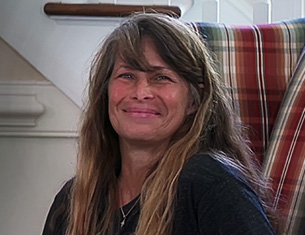Publisher's note: The author of this post is Dr. Roy Cordato, who is Vice President for Research and resident scholar for the John Locke Foundation.
In this
lecture to the Institute of Mechanical Engineers delivered this week, Patrick Moore, ecologist as well as founder and long time leader of Greenpeace, argues that the planet has actually been in a long term (50 million year) cooling trend; that long term temperature records (hundreds of thousands of years) suggest that planetary warming causes increases in atmospheric CO2, not the other way around; and that over shorter and longer periods, including over the past 20 years, there is no empirical correlation between atmospheric CO2 and increasing global temperatures. And if that's not enough contrarianism for one talk, he argues that, looking at the course of atmospheric history, we are actually in a period of dangerously low concentrations of naturally generated CO2 (from volcanoes and the like). He credits the burning of fossil fuels with adding millions of years to the existence of life on earth. He argues that this is because CO2 concentrations are in a long term decline, and if they were to fall below 150 ppb (parts per billion) plant life would not be sustainable. We are now at about 400 ppb, which is up from 280 ppb in pre-industrial times, an increase he "credits" to human induced CO2 emissions. He also argues that, as far as vegetation and plant growth is concerned, the optimal level of atmospheric CO2 is about 2000 ppb.
This lecture is packed with paleo-climatological history along with arguments about our current climate conditions and the contemporary view of CO2 as a dangerous pollutant, all based on that climate history. Regarding his claims, Moore concludes by issuing a challenge:
I issue a challenge to anyone to provide a compelling argument that counters my analysis of the historical record and the prediction of CO2 starvation based on the 150 million year trend. Ad hominem arguments about "deniers" need not apply. I submit that much of society has been collectively misled into believing that global CO2 and temperature are too high when the opposite is true for both. Does anyone deny that below 150 ppm CO2 that plants will die? Does anyone deny that the Earth has been in a 50 million-year cooling period and that this Pleistocene Ice Age is one of the coldest periods in the history of the planet?
Apart from all of this, as I noted Moore gives an interesting history of his experiences with Greenpeace going back to the organization's founding in the 1970s as a group that was primarily concerned about nuclear weapons and issues of war and peace. As Moore states:
Why then did I leave Greenpeace after 15 years in the leadership? When Greenpeace began we had a strong humanitarian orientation, to save civilization from destruction by all-out nuclear war. Over the years the "peace" in Greenpeace was gradually lost and my organization, along with much of the environmental movement, drifted into a belief that humans are the enemies of the earth.
The last straw for Moore was their campaign to ban chlorine in the 1980s.
In the mid 1980s I found myself the only director of Greenpeace International with a formal education in science. My fellow directors proposed a campaign to "ban chlorine worldwide", naming it "The Devil's Element". I pointed out that chlorine is one of the elements in the Periodic Table, one of the building blocks of the Universe and the 11th most common element in the Earth's crust. I argued the fact that chlorine is the most important element for public health and medicine. Adding chlorine to drinking water was the biggest advance in the history of public health and the majority of our synthetic medicines are based on chlorine chemistry. This fell on deaf ears, and for me this was the final straw. I had to leave.
This speech, given by a scientist who has seen the environmental movement as both an insider and an outsider, is a fascinating read and I highly recommend it.
By the way, if you would like to respond to his challenge, send it to him, not to me.
2. Ozone Report
The 2015 ozone season began on April 1 and, as I have been doing since this newsletter was started, each week during the ozone season this newsletter will report how many, if any, high ozone days have been experienced throughout the state during the previous week, where they were experienced, and how many have been recorded during the entire season to date. (Note: ground level ozone, which is what we are reporting on, is often called "smog.") According to current EPA standards a region or county experiences a high ozone day if a monitor in that area registers the amount of ozone in the air as 76 parts per billion (ppb) or greater. The official ozone season will end on October 31. All reported data is preliminary and issued by the North Carolina Division of Air Quality, which is part of the state's Department of Environment and Natural Resources. Thus far this season there have been 5 high ozone days recorded on any of the state's 42 monitors. Three occurred on
June 25 and two on August 5.
The table below shows all of North Carolina's ozone monitors and the high reading on those monitors for each day of the 7-day period, October 5-11.

























